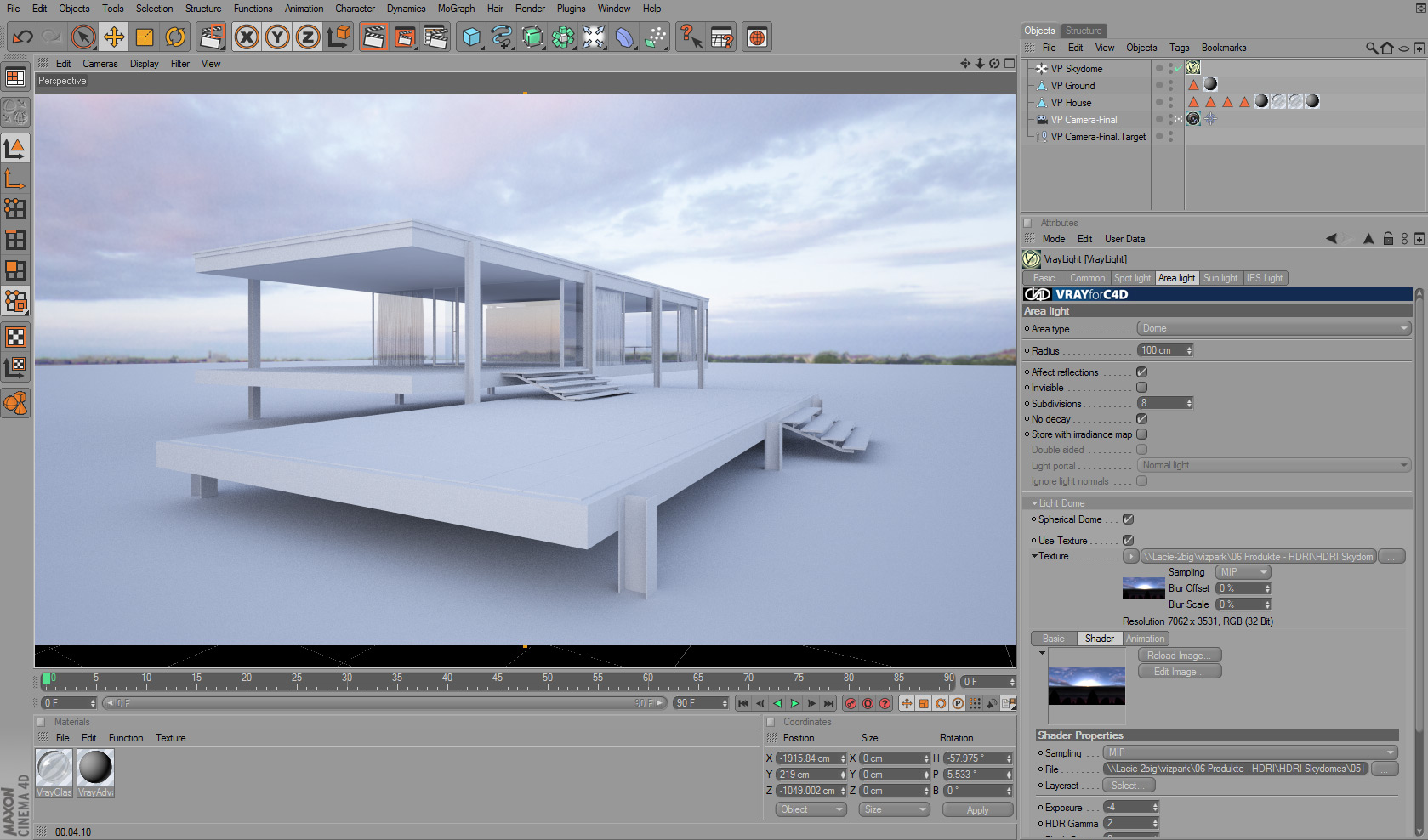


I'm not going to say which brand because I'm not getting endorsed. I think it's going to take around 12-40 seconds depending on my computer's mood. And I'm going to let you sit here until it finishes rendering. And what I'm going to do is click on this button to render it. Just so that you see the difference here we have a helmet that has physically accurate reflections on its materials. For now, you've seen the two ways we can assign reflections real ones here and fake ones here on an object. Something I'm going to illustrate on a more complex model. The upside is that this environment is extremely fast. Neither from this ornament nor from the rings. But if I render you will see that well the color is slightly off and we don't get any other reflections in here. We have the same type so to speak of reflection which we can see in the viewport as well.

So bitmaps, fisheye, that saves you a few clicks trying to find it on your hard disk. Now if you've already loaded an image in any material in Cinema 4D, providing you're in the same document you just click here and you can go and find it over here. Double click here, get rid of the reflectance, and what I'm going to do is go to the environment channel, and load the same image. Now let's go and do the same thing by not using a reflection but using an environment. So here you have a really nice sphere that reflects everything. And this allows us to hide it from plain view although it's visible in reflections. This means that this object is going to be seen by everything reflections, refractions, transparencies, ambient occlusion and so forth. Click on it, and what I want you to do is go to the tag tab and just say seen by camera off. This is one of the most powerful tags in Cinema 4D. Click on this right click to add a tag called a compositing tag. How do I do that? Well here's one of the tricks of Cinema 4D. But here's the catch, I do not want to see this sky object on the background. Both for the model objects as for the environment as well. But if I render you will see that we are getting nice reflections on this sphere. Close this, and let's apply this environment on our sky object. Open and I've applied this image to the color channel. I'm going to load this high dynamic range image I shot with a friend's camera at a friend's office. I don't really want that so what I'm going to do is create a material let's call this "envir." Double click turn the reflectance off, click on the color and click on this button to load an image. Now if I render here, you will see that now my sphere is gray because it's reflecting the gray sphere. I'm going to create an object called a sky object which is nothing more than an infinite sphere.
REFLEJOS HDRI CINEMA 4D HOW TO
Now we need to concentrate on how to make this look good. Now that is odd, because why is it black when we have this thing? Well because I've told Cinema 4D that I don't want this background to be reflected but that's another story. Now if I render here because we won't be able to see this in the viewport, you can my sphere is black and it reflects the rings and the other ornament. When it comes to reflections they're absolutely the same. It doesn't make a different really if you add Beckman or GGX they look slightly different when it comes to speculars. I'm going to select the reflectance channel, select the default specular and remove it and go to add, and add the first one Beckman. Let's go to this material here, double click, I'm going to bring it over to this side.

Let's begin by adding some actual reflective materials. Anyway, currently there are no reflections in our scene. I should've said they're both spheres with orange rings but that's not a story. The left one is a sphere with orange rings and the right one is a sphere with orange rings. In this beautiful scene, we have these two ornaments. An environment reflection is nothing more than a reflected image and there are two ways to do that in Cinema 4D Lite. Because it's impractical to model everything you want to be reflected in your object, we use environment reflections to achieve that cheaply but nonetheless with amazing results. Reflection quality is not only about the object itself but more so about the environment the object is sitting in. Just look at this 3D model with and without reflections. There are many parameters that contribute to visual quality and reflections are probably the most important one.


 0 kommentar(er)
0 kommentar(er)
